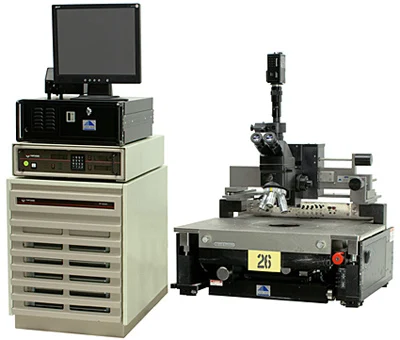5 Characteristics to Compare Before Purchasing a Probe Station Unit
5 Characteristics to Compare Before Purchasing a Probe Station Unit
 |
| 5 Characteristics to Compare Before Purchasing a Probe Station Unit |
The probe station unit has undergone numerous technological advancements over the past 10 years. Researchers surely have more options to choose from where is beneficial but can make it challenging to effectively compare unique probe station units before to purchasing. This tool represents an important financial investment so it is important to select the best solution for today and tomorrow. Fortunately, focusing on five key characteristics can make the comparison process easier and more correct.
1 ) With the growing popularity of cryogenic measurements time-consuming wiring associated with an on-wafer device is no longer necessary. Today's programs allow for visualization and electrical interrogation of multiple wafer level devices. However, this comes with a trade-off. Optical access to inflexible probing of a device can transfer warmth loads from the übung arm to the unit being tested. To minimize this effect, it is essential the probe station device has some kind of safeguard or other technology to reduce thermal radiation on the sample. Multiple tests have shown that even the smallest amount of thermal radiation transfer can alter the end results.
installment payments on your Another characteristic to compare before purchasing a übung station unit is the ability to make programmed variable temperature measurements. Typically, probe arms are moored to the sample level and the probe hint will move as the sample stage warms. This kind of makes it difficult to automate variable temperature measurements because the probes must be lifted and re-landed for any noticeable heat transition. The ability to create stable tip position that allows for continuous measurements is crucial. Not only will it ensure accuracy but it also provides increased measurement functionality.
3. The sample holders on the probe station unit must be compared as well. Most units give a variety of sample holders to choose from. Popular options incorporate a grounded sample holder, co-axle sample holder, and isolated sample holder although several additional options are available as well. The moment comparing units, it is advisable to ensure research workers can use the essential test holder required to effectively complete their experiment.
4. The probe station units' vision system is critical to compare before purchasing. This product is in charge of distinguishing characteristics of the sample and properly landing probes. Depending after the experiment the degree of detail provided by the vision system varies. Hence, researchers must consider current experiments as well as future needs when assessing vision systems.
5. The final characteristic to compare before buying a probe stop unit is overall system versatility. Taking into consideration the significant advance cost, it is essential researchers take advantage out of their unit by selecting for an option which allows for successful research utilizing a variety of methods. As more übung station units become personalized or modular overall overall flexibility and research capacities always expand.
You may also be interested: IT Asset Disposal - Environmental Compliance
Considering the significant financial investment required to get a good probe station product it is far from surprising how much time and resources are being used to accurately compare available options. By concentrating on the five key characteristics an accurate comparison can be completed quickly and easily.



Comments
Post a Comment